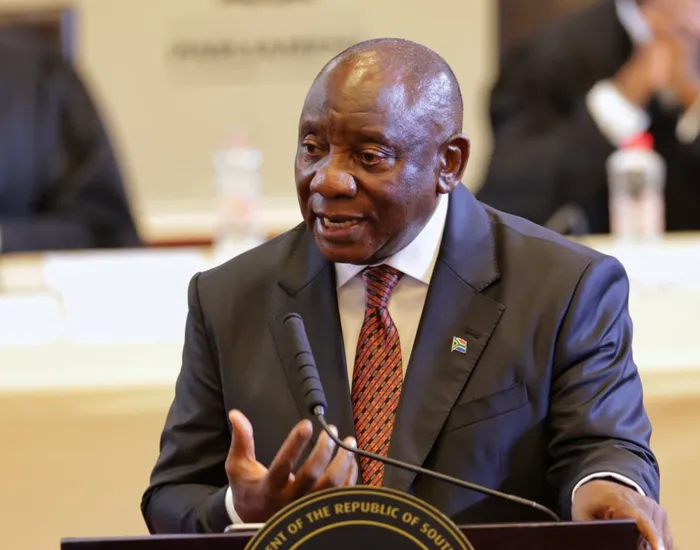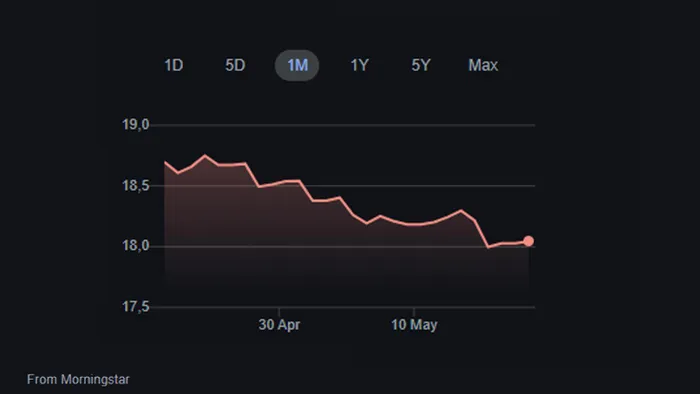
President Cyril Ramaphosa.
Image: GCIS
The rand is set to drop further in the coming days after breaking R18 to the dollar briefly on Friday last week, thanks to expectations that a National Budget will finally be passed on Wednesday.
The rand briefly settled at around the R18.03 to R18.05 range by early afternoon, having opened at R18.01.
Old Mutual chief economist, Johann Els, said that he wasn’t surprised that the rand broke through R18.
“The rand actually spent most of September and October last year below R18, in other words with a 17 handle, at one stage even going as strong as R17.11 late September last year,” he said.
Investec chief economist, Annabel Bishop, said the currency continues to “attempt to break through the R18.00 mark, a major resistance level,” after reaching R17.99 on Friday.
She said that, should the inflation target be dropped, the currency will have more strength.
Consumer Price Index data is due out on the same day as National Budget 3.0, with an announcement from the South African Reserve Bank (SARB) to be made the following Thursday.
Els said markets are likely focusing on a better growth outlook given that CPI will likely come in lower than the current figure, potentially 2.5%, which should result in interest rate cuts.
“Markets are anticipating the announcement of a new inflation target, with the range currently 3% to 6% year-on-year and the midpoint of 4.5% year-on-year. National Treasury is likely to prefer a gradual descent, as opposed to the SARB’s preference of close to 3% year-on-year,” Bishop said.
Kganyago has been publicly suggesting that the target band will be shrunk for some time, which can only be done if National Treasury implements the necessary policies.
Bishop added that Finance Minister Godongwana has previously asked National Treasury and SARB to determine the full impact on consumers and the economy first before any changes are made to the inflation target. “The announcement could come as early as this week, on Wednesday,” said Bishop.

The rand's performance is not just a number; it reflects the broader economic sentiment and the prevailing uncertainties within South Africa's financial landscape
Image: Morningstar
Bishop noted that National Treasury has said that “South Africa’s inflation target is out of sync”. A modest revision to between 3% and 5% year-on-year with a midpoint would probably be preferable for National Treasury,” said Bishop. She added that SARB has previously indicated it would like a target of 2%.
Inflation is currently at 2.7%.
Nolan Wapenaar, co-chief investment officer at Anchor Capital, said the local currency dropping below R17 to the dollar and then gaining again is not due to President Cyril Ramaphosa’s trip to the US this week. He added that it’s more a case of it has been on a recovery trend since the climb down from “Liberation Day” and the expectation that South Africa will finally be able to pass a budget.
Els, however, said the local currency could strengthen if the visit resulted in a positive trade deal.
Global trade risks have eased quite substantially since “Liberation Day” tariffs were announced early in April, “with the Trump administration realising that it's perhaps not the best way to go,” said Els. The markets immediately and adversely reacted to the news of the April 2 tariffs, and US President Donald Trump has since put extreme rates on hold and started with trade deals with China, UK and others.
Wapenaar said that Anchor Capital maintained its view that the currency will strengthen toward R17.75 in coming days.
“I think a R17 handle is not impossible going forward over the next few weeks if we continue to see improvement in South Africa’s economic growth, if we continue to see less fiscal risk, and the political side risks easing with the continuation of the Government of National Unity,” said Els.
Related Topics:
